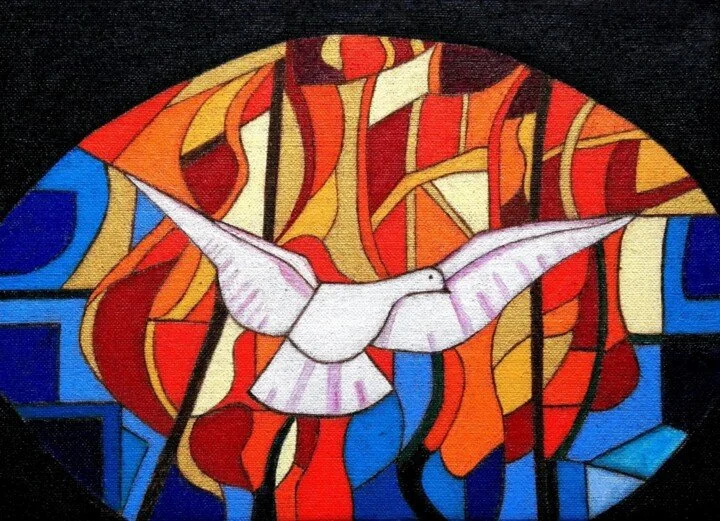What Is Pentecost Sunday and Why Does It Matter?
This Sunday is Pentecost Sunday—a day in the church calendar that often slips by quietly, but carries extraordinary meaning. Celebrated 50 days after Easter, Pentecost commemorates the moment the Holy Spirit was given to the disciples. It’s a pivotal event that marks the birth of the Church itself.
By this point in the biblical story, Jesus had already returned to heaven—an event known as the Ascension, which took place 40 days after Easter and is typically recognized on the Sunday following that milestone. Ten days later, something powerful and surprising happened.
The First Pentecost
The scene is set in Acts chapter 2. The disciples are gathered together in a house in Jerusalem, not necessarily expecting anything world-changing. They’re there to celebrate the Jewish festival of Shavuot.
Shavuot began as a harvest festival—people would bring the first fruits of their crops to the Temple as an offering. But after the destruction of the Temple in 70 AD, the meaning of the holiday shifted. It became a time to remember another moment of revelation: when God gave the Torah to Moses on Mount Sinai. Shavuot became known as the holiday of revelation.
And that theme—revelation—is where the connection between Shavuot and Pentecost gets even more interesting.
Fire on the Mountain, Fire in the Room
Acts describes what happens this way: “Suddenly a sound like the blowing of a violent wind came from heaven and filled the whole house where they were sitting.” Then, what looked like “tongues of fire” appeared and rested on each person in the room. Strange? Absolutely. But let’s dig deeper.
Back in Exodus, when God gave the Law to Moses, there was thunder, lightning, smoke, and a trumpet blast. God told Moses to keep the people at a distance—only Moses could approach the mountain. And when God arrived, God came in fire.
Sound familiar?
On Pentecost, God once again arrives in fire—but this time, things are different. There’s no mountain. No temple. No singular prophet standing apart from the crowd. Instead, God shows up in an ordinary house. The fire doesn’t stay in one place or with one person—it splits into many flames, resting on everyone present. It’s as if God is saying: This is for all of you.
The Spirit Is for Everyone
That’s the heart of Pentecost. The Spirit of God is no longer reserved for prophets or priests. No more mountaintop encounters or sacred-distance regulations. The Holy Spirit is here, and it’s for everyone.
One writer has called Pentecost “the public debut of the Holy Spirit.” It’s the moment the Church was born—not as an institution, but as a Spirit-empowered people. With Jesus gone, and the disciples now witnesses to both death and resurrection, Pentecost equips them (and us) with the Spirit to carry that message into the world.
Spirit, Breath, and Wind
The word “Spirit” in Scripture is rich with meaning. In Genesis 1, the Spirit of God hovers over the waters. The Hebrew word used is ruach—which can mean breath, wind, or even a disturbance in the air. It shows up nearly 400 times in the Old Testament, describing everything from the power that inspired the prophets to the strength that filled Samson.
In the New Testament, the Greek word is pneuma—also meaning breath or wind. Jesus uses this word when talking to Nicodemus in John 3, comparing the Spirit to the wind: unseen but powerfully felt.
So Why Celebrate Pentecost Sunday?
Because it reminds us that God’s presence is no longer distant or reserved for the few. The same Spirit that hovered over creation, empowered prophets, and filled the disciples, is available to you.
The fire still burns. The wind still blows. The Church is still being sent into the world—Spirit-filled, hope-fueled, and wide open to everyone.
Even More to Explore
The Art & Spirituality of Pentecost
Click here to see works artists have done to interpret Pentecost Sunday.
Pentecost Icon Explained
Check out this site for an explanation of the different figures and images included in Orthodox iconography depicting Pentecost, and learn what they mean.
Pentecost Art from Asia
Click here to explore Art & Theology’s goal of revitalizing the Christian imagination through painting, poetry, music, and more.



